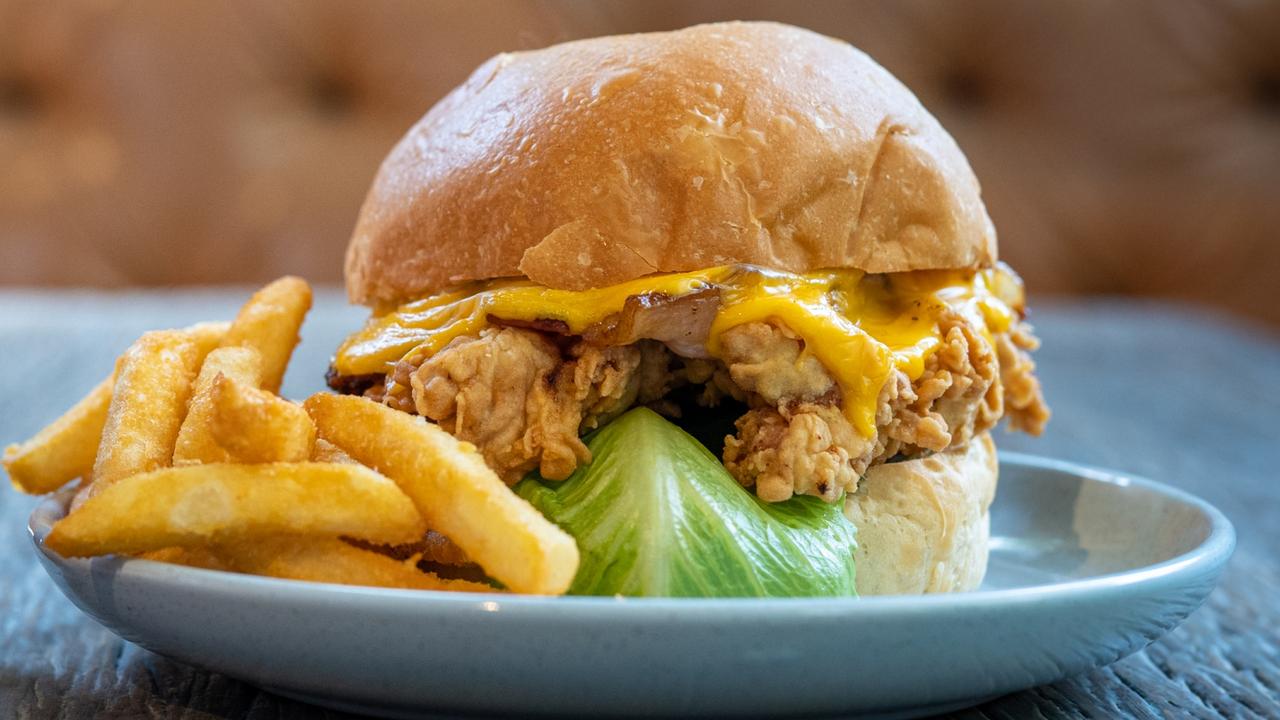Jamie’s Italian: Oliver’s secret food tips learnt from cooking with Nonnas
Celebrity chef Jamie Oliver shares the greatest lessons he’s learned about Italian cooking, from teachers the world’s wealthiest chef might never have expected.

QLD Taste
Don't miss out on the headlines from QLD Taste. Followed categories will be added to My News.
There’s no cuisine celebrity chef Jamie Oliver loves more than Italian.
For the past 25 years,, the culinary king has been making trips to the home of pizza and pasta, picking up tricks and tips along the way.
Jamie Oliver to relaunch Jamie’s Italian Australian restaurants
Jamie Oliver ‘Melbourne meeting’ in Pisasale court mix
But no trip was more enlightening for the star than the one he took for his latest cookbook and TV series Jamie Cooks Italy. Over two years he immersed himself with a group of Italian nonnas, spending days on end with them, learning their secrets and beloved family recipes.
While he shares much of those recipes in the book and program, today he lets Queensland Taste in on a few of the greatest lessons he’s learned about Italian cooking and how you, too, can make meals belissimo at home.
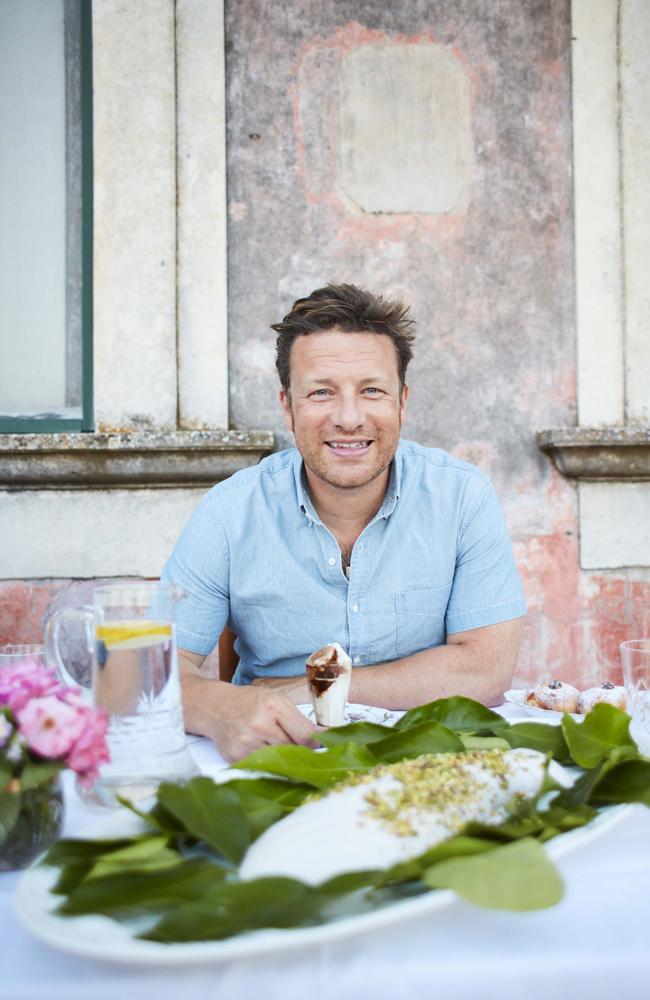
SOUL FOOD
“Heart and soul, I think that’s what I really learnt,” Oliver says from his time cooking with the nonnas.
While for many of us cooking can be a chore or simply a necessary task to feed hungry hordes, for the nonnas it’s an experience of passion and something to be proud of, and learning this, Oliver says, changed his perception on preparing food.
“It’s a little bit more soulful in the sense that it’s about nourishing and reacting to what’s growing and somehow just capturing flavour,” he says.
“Ultimately, I think simplicity and soul are the greatest things I learned. These nonnas were cooking some of the most extraordinarily tasty food and they were really proud of it.”
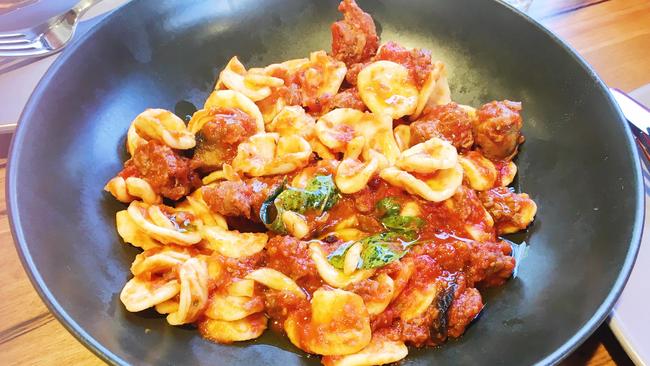
IMPERFECT IS PERFECT
“One of the things that stood out massively was just using the wrong knife for the wrong vegetables and cutting it in the wrong way,” Oliver says.
“But, of course, it’s not wrong, it’s right because it’s f**king delicious.
“Whether you’re an Aussie chef or an English chef, you pretty much go through the French regimen or training, so it’s (knife cuts like) paysanne, julienne, brunoise, macedoine, all of that business. But the point is not being accurate. The point is uneven edges, mush, chunks and, of course, what it means is flavour and texture. When you cook a lovely soup you can have it chunky or smooth or you can have a bit of both.”
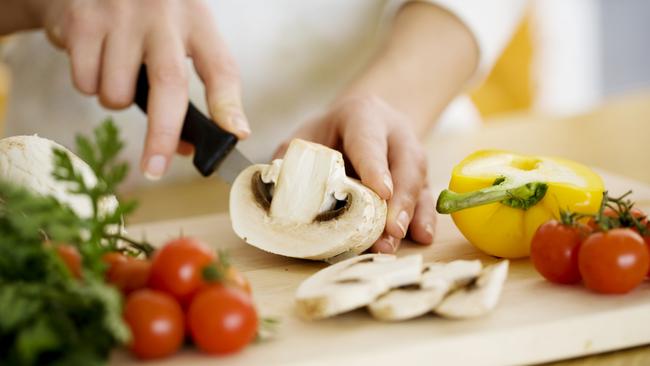
RESTRAINT IS KEY
“The most important ingredient is restraint. The most important ingredient is what not to put in,” Oliver says.
“If I’m trying to be my best cook, I’m always trying to think more like a woman and if I’m trying to be the best cook, I’m trying to stop the male ego, which is always add another thing and another thing.”
Take the classic Italian dish of aglio e olio, which combines spaghetti with simply garlic and olive oil. When done right it is one of the best dishes on the planet.
Oliver says learning how to cook with as few ingredients as possible not only creates great flavours, but also better cooks.
“For me, it was just a really good lesson. It also helps you build confidence when you just have three ingredients,” he says.
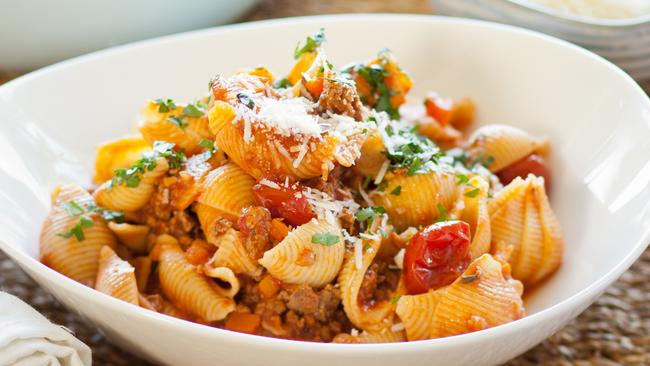
MASTER PASTA
While everyone may have a slightly different way of making pasta, it was the tip of using warm water with semolina, rather than cold, he learnt in the south of Italy that Oliver says changed his pasta making.
“The warm water breaks it down a little bit more and makes it a little bit more elastic and pliable and that was interesting to see,” he says.
He says he is also always learning about different styles of pasta in new shapes and sizes and encourages everyone to experiment with untried varieties.
“I would say the easiest one I would recommend in here (Jamie Cooks Italy) and even for a beginner to cook is what I call cortecce, which translates to tree bark,” he says.
“It’s just durum wheat flour, warm water, knead, a little kind of nugget and then you just use four fingers just to roll it off.
“It’s genuinely the easiest thing ever and you serve it with a pesto.”

SUBSTANCE OVER STYLE
As a chef and TV presenter, Oliver has always focused on the value of aesthetics in cooking.
But while working with a nonna for Jamie Cooks Italy, he says he finally learned that looks aren’t everything.
“I was working with this nonna and we were cooking this tuna and secretly as we were cooking it I’m going, ‘Oh for the love of God, it looks like a bag of sh*t’. It’s dark, it’s pasty, it’s khaki. Normally in Italy things are popping – like it’s black and green and red and it’s dynamic. And this was not dynamic and it wasn’t colourful and I’ve just spent two hours filming it,” he says.
“But then I ate it and I’m like, again it’s almost like male ego going, ‘You idiot, it’s delicious’.”
The recipe is in his book called “Ugly beautiful tuna” and he describes it as “a lesson in flavour and not being pretentious”.
“It’s flavour over visual. I’m not saying things shouldn’t be beautiful. But I could see myself thinking negative things and then when I tasted it, I’m like, ‘No, this is a moment, this is a learning point’.”
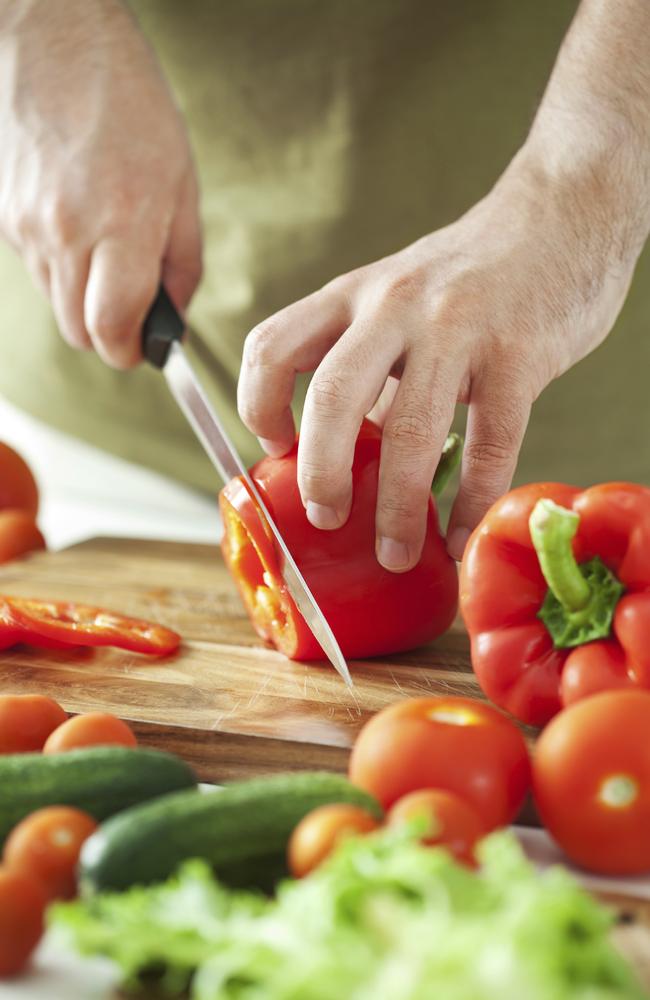
TIMING IS EVERYTHING
“Time is a secret ingredient and you really don’t have to do that much,” Oliver reveals, referring to the art of low and slow cooking, especially for meat on the bone.
“Cheap, tough cuts of meat pay you back tenfold if you give them time and low temperature,” he says.
Whether it’s a roast lamb shoulder, osso bucco or ragu, Oliver says only simple ingredients such as garlic, onion, tinned tomatoes and herbs are needed to create a fabulous dish when you use time.
“There are some amazing ragus in (the book),” he says. “Often those ragus are like two-tone, in the sense that you get meat that you can cut or slice and serve with some polenta or something like that, but then you’ve got the sauce. So, they almost take the meat out and serve it kind of like a pot roast, and then the sauce they would toss with a pasta, and then you’ve got leftovers, so it’s like the gift that keeps on giving.”

BONE IS BEST
In his slow-cooked dishes, Oliver loves cooking meat on the bone, but says it’s fish that we really need to start cooking more of whole for maximum flavour and minimal effort.
“As countries go through what we perceive as progress, we get further away from the kitchen, we get further away from the farm, and we get closer to fillets and less about whole fish and we’re frightened of bones,” he says.
“But, of course, by cooking on the bone, it looks after you in lots of ways. Cooking on the bone is not scary because it saves you. It gives you deliciousness and if you overcook it a bit, it’s sympathetic.”
Fish is less likely to dry out when cooked on the bone and you get a fabulous sauce simply from the pan juices without having to do anything, says Oliver.
“The flavour that ends up in here (your dish) it’s sort of two-toned. You can serve it together or you can take the fish out, put it to one side, just to kind of come to room temperature... and then toss pasta with (the leftover juices) for the most incredibly mind-blowing pasta ever,” he says.
“That’s a 10 or 15 minute meal and look at how beautiful that is.”
In the book, his favourite recipe for cooking fish whole is a recipe called Fish in Crazy Water, which will also be a special at his Jamie’s Italian restaurant in Brisbane this month.
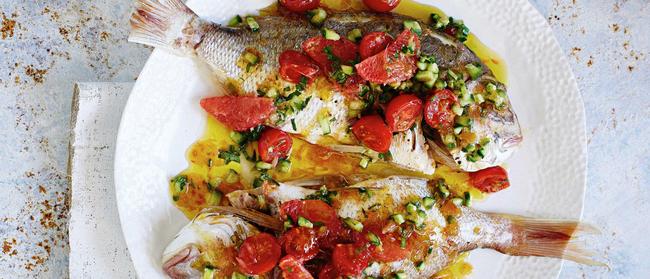
FRUITFUL SALADS
Italians love using fruit in their salads and Oliver says learning this changed his concept of salads for good.
“When you grow up in England as a kid in the ’80s, our standard was iceberg lettuce and sh*tty French dressing with malt vinegar and sunflower oil,” he says. “So, the minute you start going to extra virgin olive oil, having herbs, shaved veges like fennel, carrot, this, that and the other; and then using sweetness to counter the acidity of a dressing, we start creating something that’s called surprise and interest.”
In Jamie Cooks Italy he has a recipe for a grilled apricot salad with prosciutto, mozzarella, flowering thyme and pink peppercorns, which he says is all about celebrating textures and brightness.
“If you have a shaved, crunchy vegetable in a salad and then a leaf in a salad and then a herb in a salad and maybe a type of fruit and maybe a crushed nut, nine times out of 10 you’re going to have something f--king amazing,” he says.
“And if you do 3:1 good oil to acid with a good pinch of salt and pepper, you’re going to be in a wicked place.”
*Restaurant Jamie’s Italian in Brisbane CBD will showcase four of the recipes from Jamie Cooks Italy for one week each throughout March. The restaurant will also host a special dinner on March 27, featuring all four dishes and unlimited prosecco for $99.


